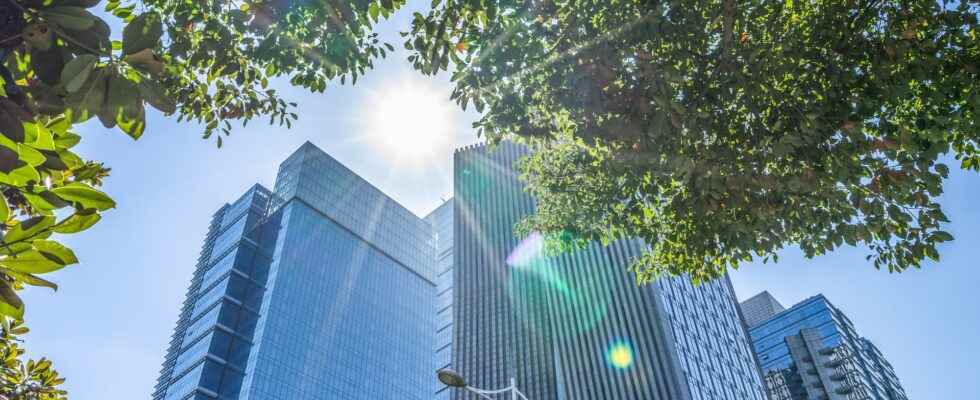Anyone who has ever walked through a city park on a hot summer day knows the cooling effect of trees. While asphalt and concrete reflect and amplify heat to the right and left of the park, green areas can be real climate oases. Research shows that this is indeed the case: According to a new study, planting trees in cities – known as urban greening – can compensate for around 0.13 degrees of surface warming per decade in European cities. This was determined by an international research group and published online in the journal »Nature Earth & Environment«.
People living in cities experience greater heat stress on hot days than the general population, due to the urban heat island effect. Urban areas warm up much more than the surrounding countryside. Experts anticipate that climate change and population growth in cities will further intensify this heat island effect. However, many current estimates assume that surface temperatures are rising at the same rate in urban and rural areas.
The 10-strong research group from the University of Nanjing, China, Ruhr University Bochum, Canada’s Western University, US Yale University, Pacific Northwest National Laboratory and Arizona State University analyzed the satellite temperature data for the period between 2002 and 2021 for more than 2000 city centers worldwide and compared them with the surface temperatures in rural areas. Very large megacities such as Abujia in Nigeria, Phoenix in the USA, London in England, São Paulo in Brazil, Beijing in China and Moscow in Russia were also included in the analyses.
The authors estimate that cities are warming 29 percent faster than rural areas, and megacities even faster. Overall, they calculated that climate change is a major contributor to urban surface warming, increasing land surface temperatures by an average of 0.3 degrees per decade. However, the scientists also found that greening in European cities can compensate for 0.13 degrees of surface warming per decade. So far, these are still unplanned effects, since very few cities are pursuing targeted greening concepts. A positive counter-example is Chicago, where more street trees were planted after an extreme heat wave in 1995. “Our trend analysis shows that the vegetation index in the city of Chicago has increased by 0.011 per decade, a rate more than three times the average rate for other megacities,” they write. The city’s surface warming has been reduced by about 0.084 degrees per decade.
While trees are being planted elsewhere, the German Research Society for Roads and Transport, an influential lobby group for the automotive industry, wants to adapt the dimensions of parking spaces and multi-storey car parks to the size of SUVs (i.e. give vehicles even more space than they already have). It would be more sensible to convert parking areas into green spaces. But for that you need similarly influential plant lobbyists.
